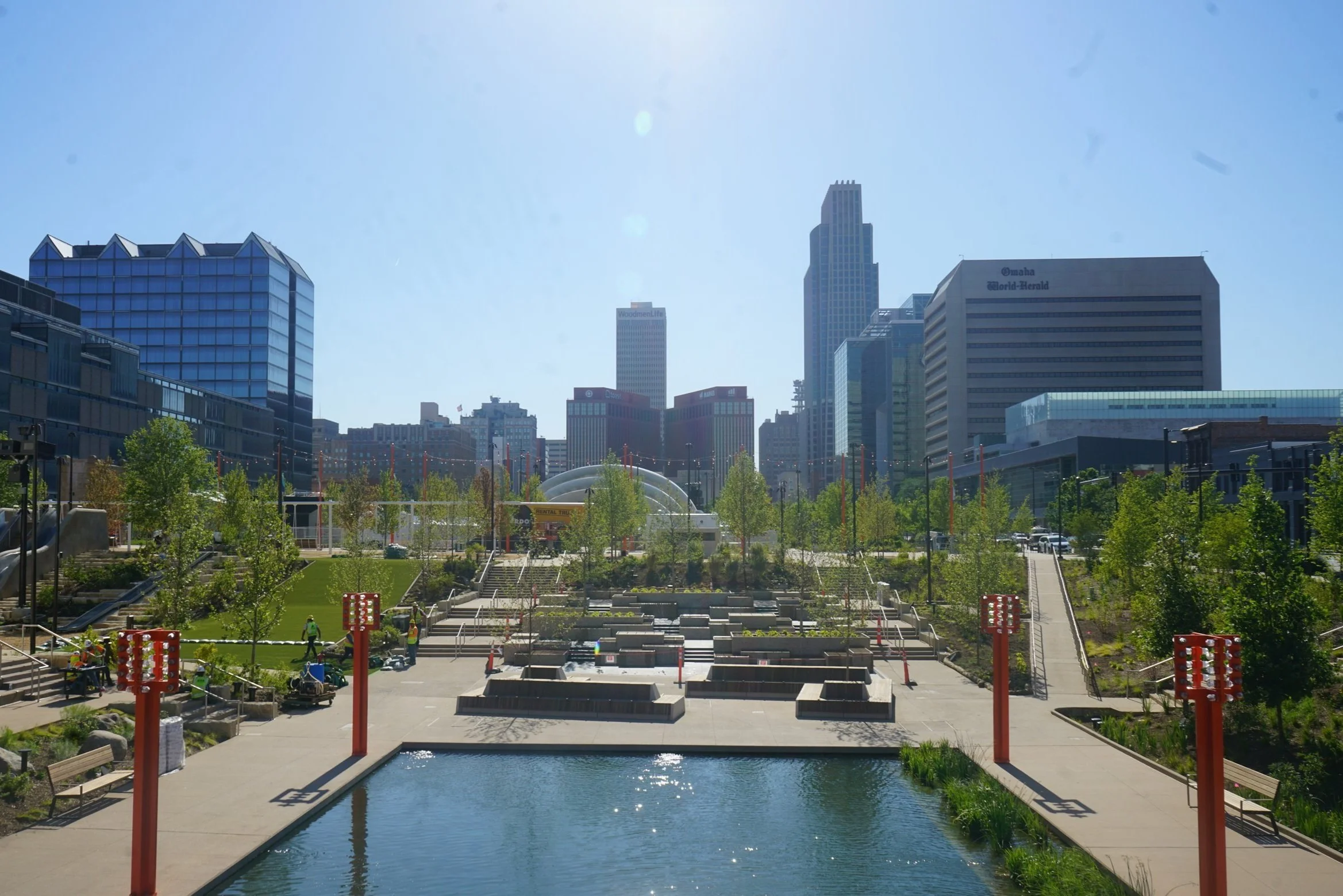Nebraskans with Medicaid Receive Dental and Vision Coverage Starting in October
By JR Contributor Molly Ashford
Three years after Nebraskans voted to expand Medicaid eligibility, those who are covered will receive full benefits — including dental and vision— starting this month. The Medicaid program in Nebraska is called Heritage Health.
Previously, Medicaid coverage in Nebraska only offered the basic tier of benefits, including visits to the doctor’s office, hospital, and prescription drugs. The new benefits include what were previously known as prime benefits: dental, vision and over-the-counter medications.
if you have questions
about the program you may contact Heritage Health on their website or by calling 1-888-255-2605.
Nebraska announced plans to institute a two-tier Medicaid expansion system with a roundabout work requirement a year ago. Despite the fact that attempts to institute Medicaid work requirements have been struck down by federal courts, Nebraska’s unique system was built to withstand court challenges and was granted approval by the Trump administration. Healthy adults who wanted access to prime benefits would have been required to attend an annual health visit, complete a risk assessment, and complete 80 hours of “community engagement activities” like work, school or volunteering every month.
The state announced in June that this program would not be implemented, and the Heritage Health Adult (HHA) expansion would automatically deliver all benefits to recipients.
“Previously, you had to be medically frail or pregnant to receive prime benefits,” explained Cherylle Leffall, the eligibility and enrollment supervisor at Charles Drew Health Centers. “The change this year is that everyone will receive equal benefits, so everyone will receive medical, dental, vision, prescription and over-the-counter drug coverage.”
A new Medicaid card will not be needed for people who currently have coverage, and existing Medicaid recipients will automatically receive full benefits.
Leffall said that expanding Medicaid to include dental and vision insurance is of great importance to Nebraska’s low-income population. She sees many people come through the clinic specifically looking for insurance to cover dental and vision issues.
“With dental and vision coverage, there will probably be caps or limitations on how often those services can be received,” she said. “But just having access is so important. Dental and vision is really the complete package-- it pretty much takes care of all of your healthcare needs.” Dental health can also offer a window into your overall wellness as many chronic conditions such as diabetes effect oral health.
In order to qualify for Medicaid coverage, you must not be eligible for Medicare, be between the ages of 19 and 64, and have an income no more than 138% of the federal poverty level, adjusted based on family size. The chart below breaks down the income requirement for up to a family of six.
1: $17,774 | 2: $24,040 | 3: $30,305 |
4: $36,570 | 5: $42,835 | 6: $49,100
Individuals who currently have coverage through employer-sponsored or private insurance but meet the three eligibility requirements can qualify to have Medicaid as their secondary insurance.
There are a few ways to apply and enroll. An online application is available at www.accessnebraska.ne.gov. Omaha residents can call the Department of Health and Human Services office at 402-595-1178. Lincoln residents can call 402-473-7000.
Navigators to help with the application and enrollment process are available at federally qualified health centers such as Charles Drew and OneWorld.
Applicants will be asked to choose a Medicaid provider. The options are United Healthcare’s community plan, Nebraska Total Care and Blue Cross Blue Shield’s Healthy Blue plan. Applicants who do not choose a plan will be randomly assigned to one of the providers.
Medicaid works like any other insurance, which means you can use it to visit a primary care physician instead of only utilizing an emergency department (ED) or urgent care clinic. There are some key differences between EDs and urgent care clinics. For example EDs usually result in larger medical bills, though in true medical emergencies it may be the right option. Below is a list of some EDs and urgent care clinics in the North Omaha area.
Clinics and Hospitals in North Omaha:
*NOISE Omaha is not a medical institution and does not give medical advice. the following lists are resources to help our readers make more informed decisions for themselves:
Hospitals
CHI Health Creighton University Medical Center - University Campus - 2412 Cuming St, Omaha, NE 68131
Nebraska Medical Center - 42nd and Emile St, Omaha, NE 68198
CHI Immanuel - 6901 N 72nd St, Omaha, NE 68122
Urgent Care Clinics
Charles Drew Health Care Center - 2915 Grant, Omaha, NE 68111
Charles Drew Health Center - 5319 N 30th St suite a, Omaha, NE 68111
Charles Drew Health Center Kellom - 1311 N 24th St, Omaha, NE 68102
Charles Drew Sienna Francis - 1111 N 17th St, Omaha, NE 68102
North Omaha Area Health Clinic NOAH - 5620 Ames Ave #2884, Omaha, NE 68104
Nebraska Medicine Midtown Health Center - 139 S 40th St, Omaha, NE 68131
Nebraska Medicine Baker Place - 5050 Ames Ave, Omaha, NE 68104
Nebraska Medicine Fontenelle Clinic - 5005 Ames Ave, Omaha, NE 68104
Methodist Community Health Clinic - 208 S 26th Ave, Omaha, NE 68131
CHI Health Clinic Benson Walk-In - 2734 N 61st St, Omaha, NE 68104
CHI Health Clinic Family Medicine - 1111 N 17th St, Omaha, NE 68102
Crossroads Urgent Care - 325 N 72nd St, Omaha, NE 68114
What’s the Difference between Urgent Care and Emergency Room Visits?
Emergency Room Visits
Open 24 hours a day
An Emergency Department treats life or limb-threatening health conditions in people of all ages.
Emergency Departments are staffed 24/7 with physicians, physician assistants, nurse practitioners and nurses trained in delivering emergency care.
Emergency Departments also have the imaging and laboratory resources needed to diagnose and deliver care for severe and life-threatening situations.
Emergancy Departments can treat life-threatening conditions such as: fainting or passing out, breathing difficulties, cardiac episodes, sudden unusually severe headache. Symptoms indicating a possible stroke such as sudden onset speech problems, trouble seeing, walking or sudden confusion, dizziness, weakness or drooping on one side of the body. Additionally, ingestion or inhalation of poisonous substances, severe bleeding, severe bone breaks, especially if a bone is protruding from the skin, deep wounds and severe burns, coughing or throwing up blood, extreme pain, severe allergic reactions (hives, swelling or breathing difficulties), very high fevers, persistent vomiting or diarrhea, overdoses, and seizures.
Urgent Care
Urgent Care treats common conditions such as: minor fractures, back pain, nausea, vomiting, diarrhea, minor headaches, blood work, certain fevers (ER may be more appropriate for infants and toddlers), ear and sinus pain, coughs or sore throat, animal bites, stitches, vaccinations, sprains and mild asthma, minor rashes, urinary tract infections, eye irritation (pain and swelling), cold and flu symptoms, minor allergic reactions.
Can treat non-life threatening illness or injury that can’t wait till next day
Choose if you have illnesses or injuries without other symptoms
Urgent Care clinics are staffed with physician assistants, nurse practitioners and nurses.
Urgent Care providers can order basic labs and imaging tests, such as X-rays, to help them provide diagnoses and develop treatment plans.
Typically open during day and evening business hours













